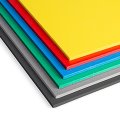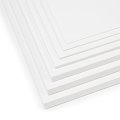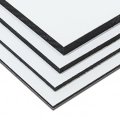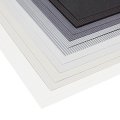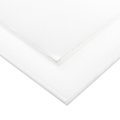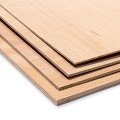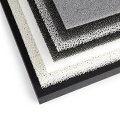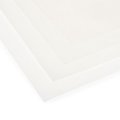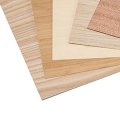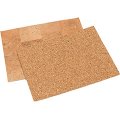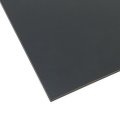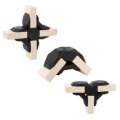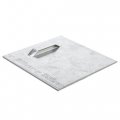Polyurethane Rigid Foam Sheets
Information on polyurethane rigid foam boards
The duroplastic polyurethane boards or rigid foams are an easily machinable material with favourable material properties for architectural and design model making. PUR materials with unpainted surfaces should not be exposed to intense sunlight for long periods of time, as UV radiation causes colour changes and decomposes the material. Even though SikaBlock panels are characterized by their low thermal expansion, greater temperature fluctuations during transport and storage of manufactured models must be ruled out in order to avoid cracks in the material. The number behind the rigid foam indicates the density of the foam in kilograms per square meter. The smaller the number, the softer the PUR rigid foam.
Processing PUR rigid foam
Before processing, the material must be tempered to room temperature. PUR panels and rigid foams can be machined with all high-quality wood and metalworking tools (sawing, drilling, turning, milling). In addition, they can be machined with hand tools - this is surprisingly good for lighter panels up to a density of 200 kg/m³. However, thermal cutting is not possible because polyurethane is a duroplast.
Use carbide-tipped saw blades for sawing and work at speeds between 3000 and 6000 rpm. Blunt saw blades lead to increased heating of the material and thus cause greater distortion.
Milling is carried out with HSS or carbide cutters at speeds of 2000 to 6000 rpm and a feed rate of 3 to 5 m/min. Ensure good dust extraction during machining! A higher feed rate during sawing, drilling and milling leads to thicker chips and thus to less dust generation. For more detailed information on milling, please refer to the information provided by the tool manufacturer.
The surfaces of all PUR hard foam and model plates can also be machined by hand with conventional abrasives - for lighter types, of course, with higher removal rates than for heavier ones. Lighter types have coarser pores and may have to be smoothed and sanded several times to obtain a lacquerable surface. All SikaBlock boards are characterised by good adhesion of the levelling compounds.
Two-component polyester fillers for coarser unevenness and polyester spray fillers are recommended as fillers. Apply the spray filler twice undiluted, then spray first (always with intermediate sanding!). Intermediate sanding is best done with 100 to 240 grit, the final sanding with 400 grit (600 grit paper for dark high gloss colours). For very high-quality models, primer filler is applied before varnishing.
Two-component adhesives based on epoxy or polyurethane resin are suitable for bonding clean, dry, dust- and grease-free surfaces. As these are often harder than the board material when cured, two blocks should be glued together in such a way that the adhesive does not reach the final surface of the model to facilitate subsequent sanding.
